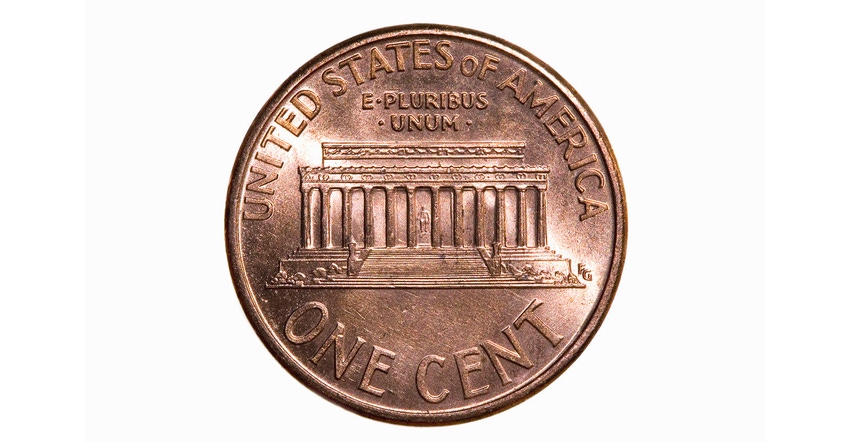Resin Price Report: PE, PP Resin Prices Each Drop a Penny
Prime polyethylene (PE) prices were mostly a penny lower for a second straight week, while polypropylene (PP) prices lost a cent amid declining feedstock monomer costs and growing upstream inventories.
May 11, 2023

Spot resin trading remained moderate the first week of May, which seems to have become the new normal. Although transactions were well within the average volumes seen so far in 2023, they were still significantly below the traditional turnover at the PlasticsExchange trading desk.
“We normally see a nice surge of business in the first quarter from general restocking and seasonal demand, but it did not happen this year, and while we were hopeful that better buying would just be pushed off to the second quarter, it has simply not developed,” reported the PlasticsExchange in its weekly Market Update. “Still, our deal flow was slightly improved this past week, and transactions were a bit easier to put together, as some sellers acquiesced to reasonable buyer bids, while other processors were willing to pay up to cover urgent spot truckload needs.”
Resin plants come back online
Prime polyethylene (PE) prices were mostly a penny lower for a second straight week, as a good flow of railcars rolled into the spot market. Available material varied in quality, ranging from Generic Prime to a steady stream of off-grade material, including transitional cars as production-challenged resin plants have been coming back online.
Polypropylene (PP) prices also gave back another penny amid declining feedstock monomer costs and growing upstream inventories. Though resellers have been destocking, and their readily available packaged inventories have become thin, the PlasticsExchange said that it maintains spot liquidity on all Prime commodity-grade PE and PP resins, ready for immediate shipment. There has been a run on certain grades — co-polymer PP No Break resins and high-density PE for pipe — so some less liquid fringe commodity resins have been more challenging to source and restock.
Linear-low-density PE Film in demand
Trading was fairly active in the PE market, supported by a small step up in demand. There were relatively heavy offerings of Widespec railcars, while Prime material was available from resellers looking to dish off a portion of their forecasted commitments. Most PE grades dropped another penny with the exception of linear-low-density (LLD) PE Film, which managed to hold flat on the week. LLDPE Film was the biggest mover at the PlasticsExchange last week, indicative of more robust demand. Low-density PE Film trading followed in a close second and high-density PE for blow mold, the most traded grade just a week earlier, rounded out the top three. There was little interest in injection grades.
Technically, four force majeure declarations are still active, but reactors have been coming back online. Producers have kept some allocations in place as they rebuild inventories of affected grades. Still, supplies have improved and the PlasticsExchange said it expects some force majeure declarations to be lifted sometime during May. This all comes as producers compete for international market share with the Middle East and Asia, where demand is also somewhat dull and production capacity is growing.
April PE contracts rolled steady from March, and producers will take another shot at implementing a nickel increase in May, before heading into hurricane season at the start of June.
PP buyers wait for further easing in prices
The PP market was still generally soft the first week of May — there was a full range of material accessible as shippable railcars and prices slid another cent. The PlasticsExchange notes that it has seen better buying for packaged PP — co-polymer PP more so than homo-polymer PP — as buyers opt for lower quantities in anticipation of prices easing further. The market has already come off significantly after the sharp and steep cost-push Q1 rally, which topped out in mid-March. The spot PP market lagged during the run-up, which was a result of weak demand, attributed to downstream de-stocking of both resins and finished goods, along with holdouts as processors tried to withstand buying near peak pricing. Volume buying grew in April, as price relief set in.
PP contracts dropped an average of $0.11/lb in April and are setting up for another sizable decrease this month based on the continued decline in polymer-grade propylene (PGP) costs. Producers will look to regain some margin by dropping PP contracts by something less than the upcoming cost savings that they will receive this month, according to the PlasticsExchange.
Read the full Market Update, including news about PGP pricing and energy futures, on the PlasticsExchange website. For a comprehensive review of resin pricing and activity in the first quarter of 2023, read this analysis by Zachary Moore of business intelligence firm ICIS.
About the Author(s)
You May Also Like




